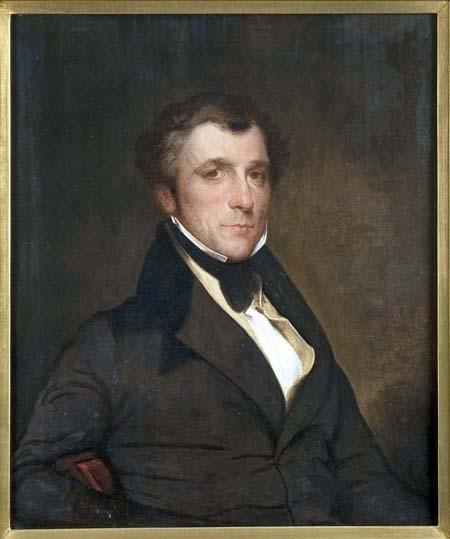February 1, 2018

Captain Forbes witnessed devastation first hand.
The newest exhibit at the Forbes House Museum in Milton tells the story of Captain Robert Bennet Forbes’s humanitarian aid mission to Ireland during the height of the Great Potato Famine of the 1840s.
The exhibit, which officially opened on Jan. 27 at an open house event at the museum, features a collection of artifacts and documents that detail the voyage and place it in historical context.
In February 1847, Ireland was experiencing a particularly harsh winter in the throes of the potato famine. Stories began to emerge of entire towns being wiped out by starvation, freezing temperatures, and famine-related diseases like typhus. As news of the tragedy continued to filter across the Atlantic, Boston residents rallied to come up with a plan to help.
After a meeting at Faneuil Hall, the seed of a humanitarian aid mission emerged, with Captain Forbes at the helm. Born in Jamaica Plain in 1804 and raised in Milton, Forbes was an experienced seafarer who made several trade voyages to China in his lifetime.
Seeing the urgency of the food shortage in Ireland, he took the initiative and petitioned Congress to lend him the Jamestown, a warship docked in Charlestown harbor, to ferry supplies across the sea. President James K. Polk approved the petition, marking the only time in history a warship has been leased to a private citizen.
In just five weeks, the Boston Relief Committee raised 800 tons of food and other provisions, receiving donations from Catholic and Protestant congregations alike throughout the Boston area and up and down the Eastern seaboard. Beginning on St. Patrick’s Day, a group of volunteers comprising mainly Irish immigrants helped to load the ship with thousands of barrels containing flour, rice, cornmeal, dried meat, and clothing. When it departed, the Jamestown rode low in the water due to its massive load of supplies, “a ship of war changed into an angel of mercy,” as a pastor friend of Forbes described it in a letter.
With a volunteer crew, Forbes set sail on March 28 and arrived at Cork harbor in just two weeks. He was greeted with fanfare and celebration, but he didn’t stop there; he was instrumental in assuring the supplies were distributed efficiently and equally across the Irish countryside. When a Catholic priest named Father Matthew brought him to rural villages decimated by the blight, Forbes witnessed firsthand the devastation and realized that it was in these parts of the country where the need was the greatest. He resolved that he would use the ship for another voyage.
In collaboration with the Massachusetts Historical Society, the Forbes House Museum has opened a new exhibit on this overlooked story of goodwill, featuring various artifacts and documents from the journey including the Jamestown’s wheel, Captain Forbes’s personal letters and journals, the official US passport, a signed presidential petition from the voyage, and thank you gifts from the Irish people.
The collection of testimonials and newspaper clippings details much about the famine story, the unprecedented US response, and the extensive records documenting which towns and families benefited from the aid.
Museum trustee Susan Lachevre emphasized how important it is that the story be remembered, and celebrated. “We’ve not yet been able to tell it altogether, as the things have been scattered around the museum and at Mass Historical until now,” she said.
Relief efforts were a success, Lachevre explained, in spite of growing tensions in Boston as more and more Irish Catholics immigrated to the city. “That was another wonderful thing about this, that people were rising above their political differences to help these starving people. There was a lot of religious friction as well, and people set all of this aside.”
The success of the mission is mostly beyond common knowledge today, on both sides of the Atlantic. But the precedent set by the voyage inspired several like it during the remaining years of the famine, and provided a blueprint for humanitarian aid relief going forward. “It’s been called one of the first large-scale philanthropic efforts in history,” said Lachevre.

